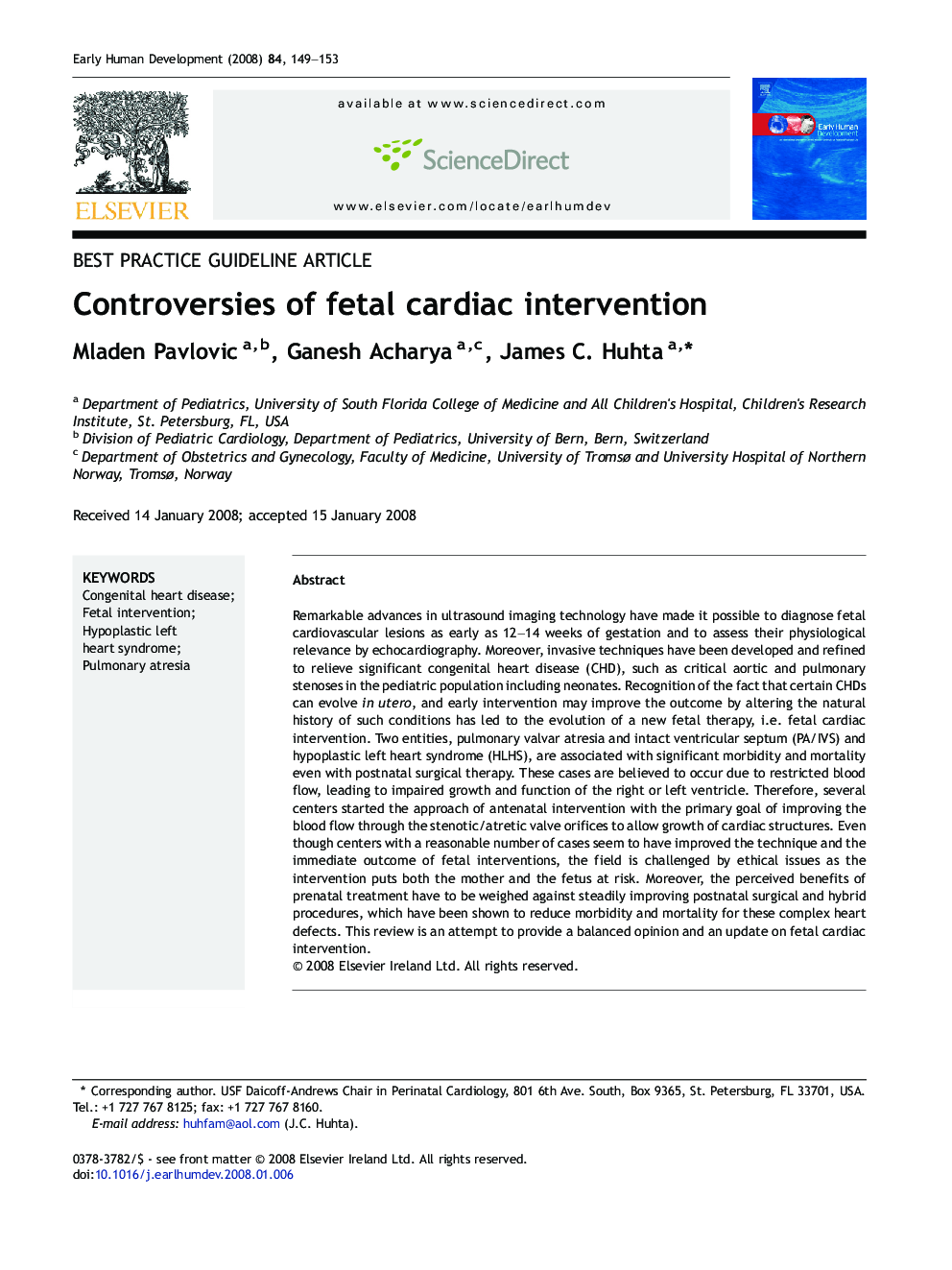| Article ID | Journal | Published Year | Pages | File Type |
|---|---|---|---|---|
| 3917213 | Early Human Development | 2008 | 5 Pages |
Remarkable advances in ultrasound imaging technology have made it possible to diagnose fetal cardiovascular lesions as early as 12–14 weeks of gestation and to assess their physiological relevance by echocardiography. Moreover, invasive techniques have been developed and refined to relieve significant congenital heart disease (CHD), such as critical aortic and pulmonary stenoses in the pediatric population including neonates. Recognition of the fact that certain CHDs can evolve in utero, and early intervention may improve the outcome by altering the natural history of such conditions has led to the evolution of a new fetal therapy, i.e. fetal cardiac intervention. Two entities, pulmonary valvar atresia and intact ventricular septum (PA/IVS) and hypoplastic left heart syndrome (HLHS), are associated with significant morbidity and mortality even with postnatal surgical therapy. These cases are believed to occur due to restricted blood flow, leading to impaired growth and function of the right or left ventricle. Therefore, several centers started the approach of antenatal intervention with the primary goal of improving the blood flow through the stenotic/atretic valve orifices to allow growth of cardiac structures. Even though centers with a reasonable number of cases seem to have improved the technique and the immediate outcome of fetal interventions, the field is challenged by ethical issues as the intervention puts both the mother and the fetus at risk. Moreover, the perceived benefits of prenatal treatment have to be weighed against steadily improving postnatal surgical and hybrid procedures, which have been shown to reduce morbidity and mortality for these complex heart defects. This review is an attempt to provide a balanced opinion and an update on fetal cardiac intervention.
